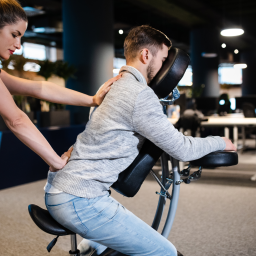May is national walking month, where everyone across the UK is encouraged to take to their feet and feel the benefits of walking. The month sees events taking place up and down the country including a week long Walk-to-work challenge.
Between 11 – 15 May 2015 employees are encouraged to leave their cars at home, put national transport aside and get the blood pumping with a healthy walk to work. If that is a bit too much of a challenge then encouragement is being given for employees to make time during a lunch break to get away from the workplace and explore the world around them on foot.
In May 2014 workplaces around the UK logged more than 50,000 miles during walk to work week. This year the charity Living Streets, who organise the event, hope to beat that target and help to get people fit and healthy as a result.
Why walk?
Walking is good for you. It can improve health and has the ability to restore and preserve muscular health. When you walk you use 200 muscles! It can benefit nervous and emotional health while at the same time give a sense of independence and self-confidence. Walking can also be a great source of inspiration, both Charles Dickens and Wordsworth were noted for walking to gain inspiration.
Scientists have added their support for the benefits of walking with experts recently stating that walking is better for us than intense bursts of exercise. There is emerging evidence showing that moving around and walking throughout the day gives more health benefits than an hour of intense physical activity. Walking has even been referred to as the ‘superfood’ of fitness. This is because the body requires movement nutrients in the same way that it requires dietary nutrients.
How do I get involved?
To benefit from the benefits of walking, you can join in with the Walk to Work challenge. Or at least try to walk 10,000 paces every day during the week of 11 – 15 May. Most people walk 3,000 – 4,000 paces, so this is a great way to increase activity, fitness and mental stimulation.
If you are responsible for health and wellbeing at work and want to organise a Walk to Work challenge, why not team this with some on site massage therapy. After walking, especially when walking more frequently than you’re used to, muscles can become tired and knotted, despite stretching. These knots can throw the body and posture off balance posture as it tries to protect the areas that are tense and sore. Massage can work out these knots, relieving the stress they can place on muscles and tendons, ligaments and joints.
Massage is also known to increase the blood flow to areas massaged and helps the body to get rid of lactic acid. The areas most stressed during long periods of walking are hamstrings, quadriceps, adductors, knees, ankles and gluteals. Massage concentrating on these areas can help to massage away that tension.
To find out more about Walk to Work week contact Living Streets and get hold of their resources including top tips; promoting walking at work; how to run a walking meeting; walking and health and walking and equality.

















